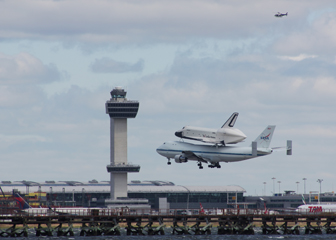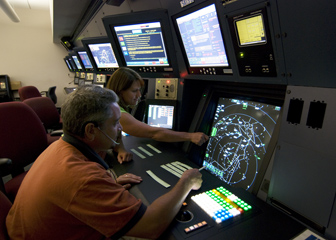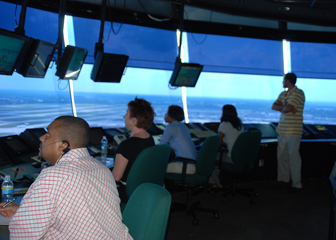Summary

| Quick Facts: Air Traffic Controllers | |
|---|---|
|
$108,040 per year
$51.94 per hour |
|
| Associate’s degree | |
| None | |
| Long-term on-the-job training | |
| 27,000 | |
| -3% (Decline moderately) | |
| -800 | |
What Air Traffic Controllers Do
Air traffic controllers coordinate the movement of air traffic to ensure that planes stay safe distances apart.
Work Environment
Air traffic controllers work in control towers, approach control facilities, or route centers. Because total concentration is required at all times, the work can be stressful and exhausting. Night and weekend shifts are common.
How to Become an Air Traffic Controller
To become an air traffic controller, a person must be a U.S. citizen, complete an air traffic management degree from a Federal Aviation Administration (FAA) certified school, achieve a qualifying score on the FAA preemployment test, and complete a training course at the FAA Academy. Controllers with previous air traffic control experience, such as from the military, may not need to complete the FAA education requirements. Those without previous air traffic control experience must be younger than 31 to become an air traffic controller.
Pay
The median annual wage of air traffic controllers was $108,040 in May 2010.
Job Outlook
Employment of air traffic controllers is projected to decline by 3 percent from 2010 to 2020. Most employment opportunities will result from the need to replace workers who retire or leave the occupation. Job opportunities will be best for applicants with an air traffic management degree from an FAA certified school.
Similar Occupations
Compare the job duties, education, job growth, and pay of air traffic controllers with similar occupations.
O*NET
O*NET provides comprehensive information on key characteristics of workers and occupations.
Contacts for More Information
Learn more about air traffic controllers by contacting these additional resources.




